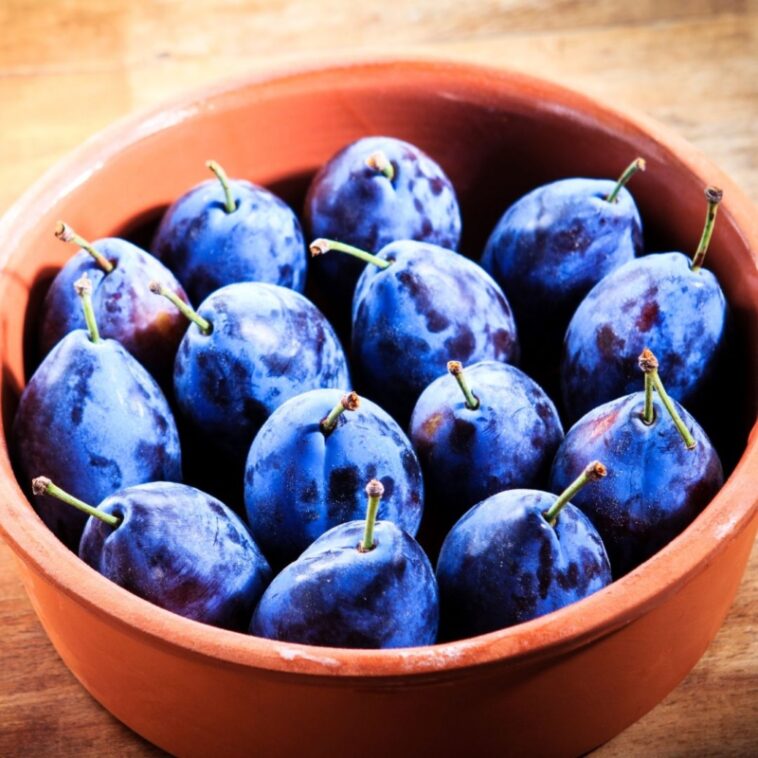Naturally blue fruits and vegetables are considered superfoods.
In this post, we’ll be exploring 21 tasty and healthy blue fruits and vegetables.
From blueberries to purple potatoes, these colorful fruits and vegetables are not only stunning but super nutritious.
Blue Fruits and Vegetables
Here are naturally blue fruits and vegetables you should be eating!
Related: Related: Top 10 Blue Vodka Cocktails
1. Blueberries
A fruity classic: Blueberries are a great source of fiber and are jam-packed with Vitamin C! They’re considered a superfood.
Blueberry range in color from light-blue to almost black. Most varieties have waxy “blooms” that make them appear lighter.
Blueberries are low in low calories, and high in nutrients. They are known as the “King of Antioxidants” and are also rich in phytoflavinoids.
Looking for more blue food ideas? Check out 30 Blue Food Items: A List of Naturally Blue Foods.
2. Kastoree Mango
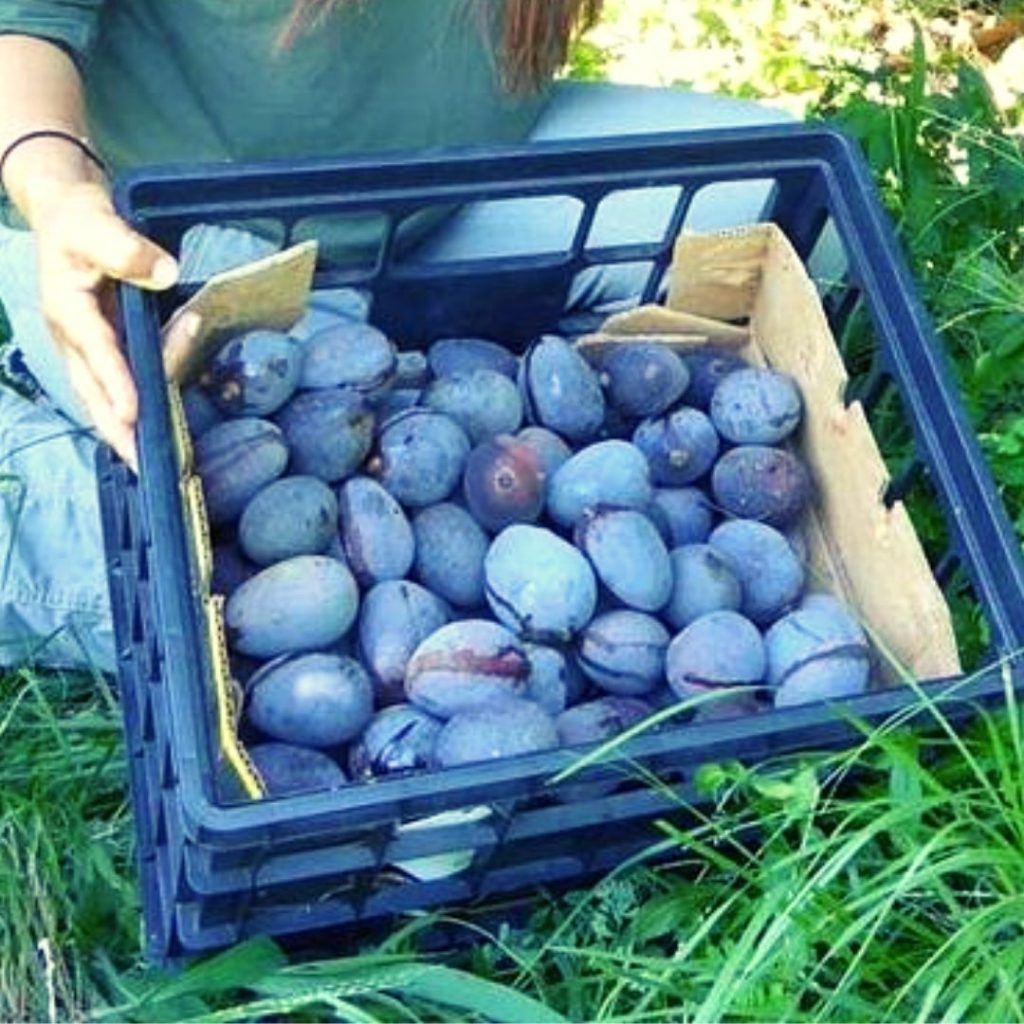
The blue mango, also called “Kastoree,” is native to the south Kalimantan region of Indonesia. The skin is bluish-purple and the flesh is orange.
It is not technically a Mango but an Indo-Mango relative. They’re grown in Florida, but are now considered “extinct in the wild.”
Kastooree fruit should be eaten fresh. You can mix the pulp with other fruits to create a tropical fruit salad. The pulp can also be used to make syrup for desserts, and other baked goods. Kastooree mangoes are great for making ice cream, or a refreshing juice.
3. Blue Marble Tree Fruit
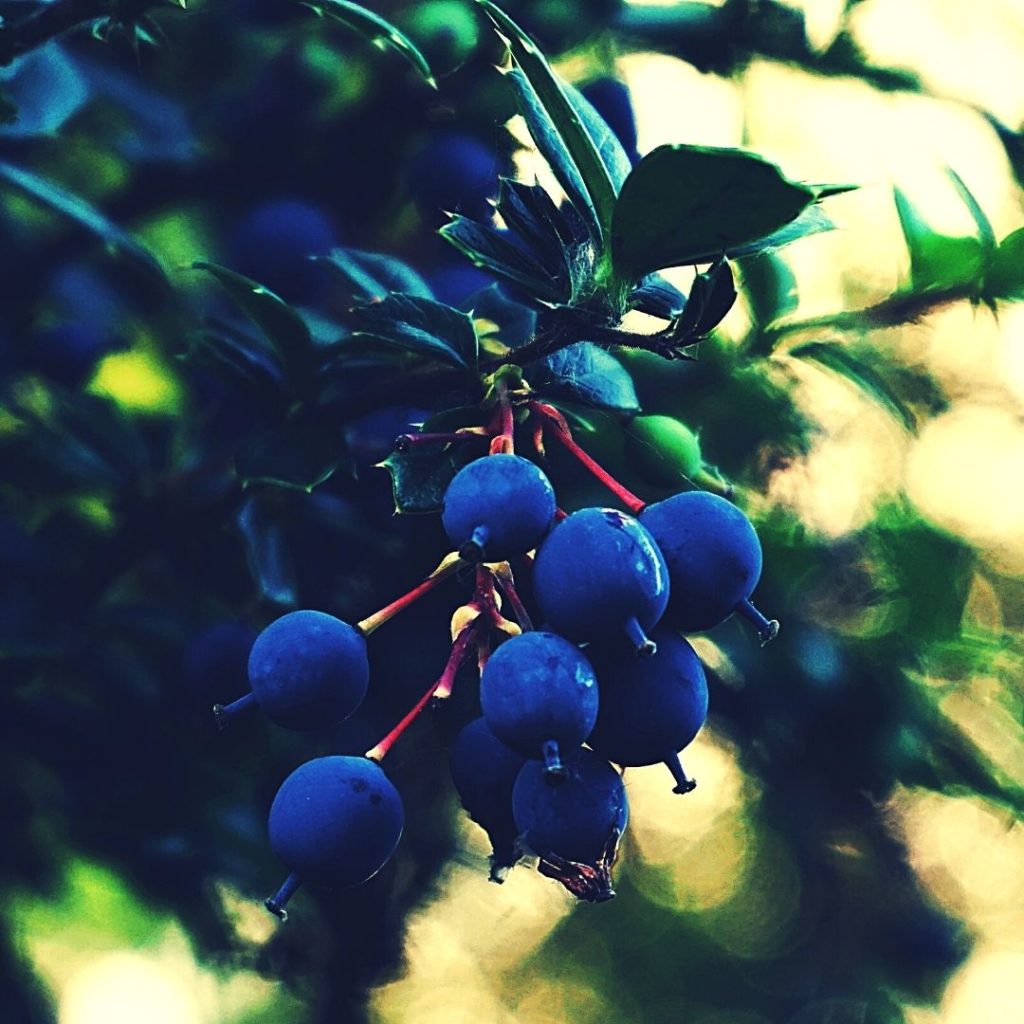
During summer, iridescent blue fruit with a green pulp. It’s reddish-orange fallen leaves can be found beneath trees.
The pulp is best when a little over-ripe, or it can have a sour taste.
In Hawai’i the seeds are used for leis.
4. Elderberries
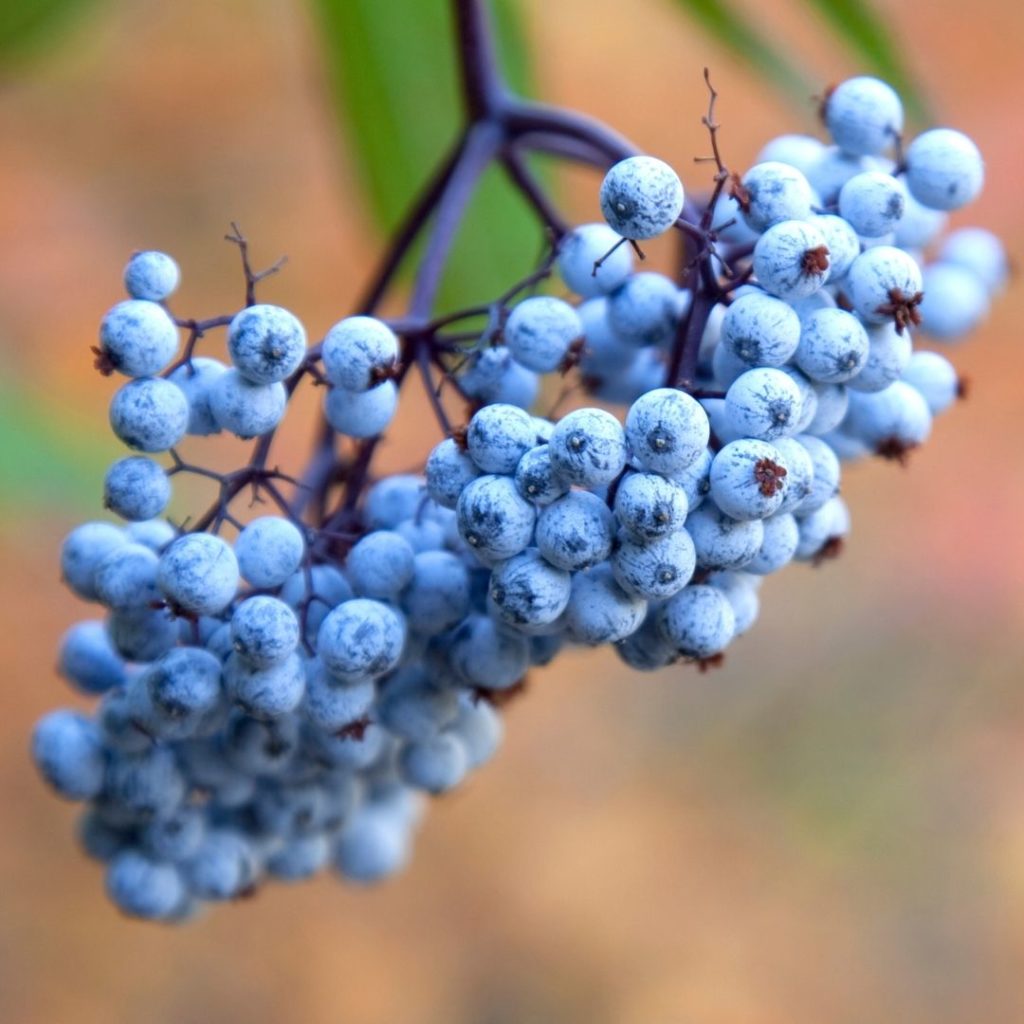
This blue-purple fruit may help defend against the cold and flu by boosting your immune system. It’s also been shown to help people recover from these illnesses faster.
Elderberries come in a range of colors from bluish-purple to deep black, and they grow in clusters with reddish stems. Like blueberries, they are covered with a white bloom when ripe.
Elderberry provides a variety of immune-boosting antioxidants including vitamins A and B. These vitamins, antioxidants, and vitamins can help to strengthen your immune system.
Related: 25 Fruits That Start With E
5. Blue Tomatoes
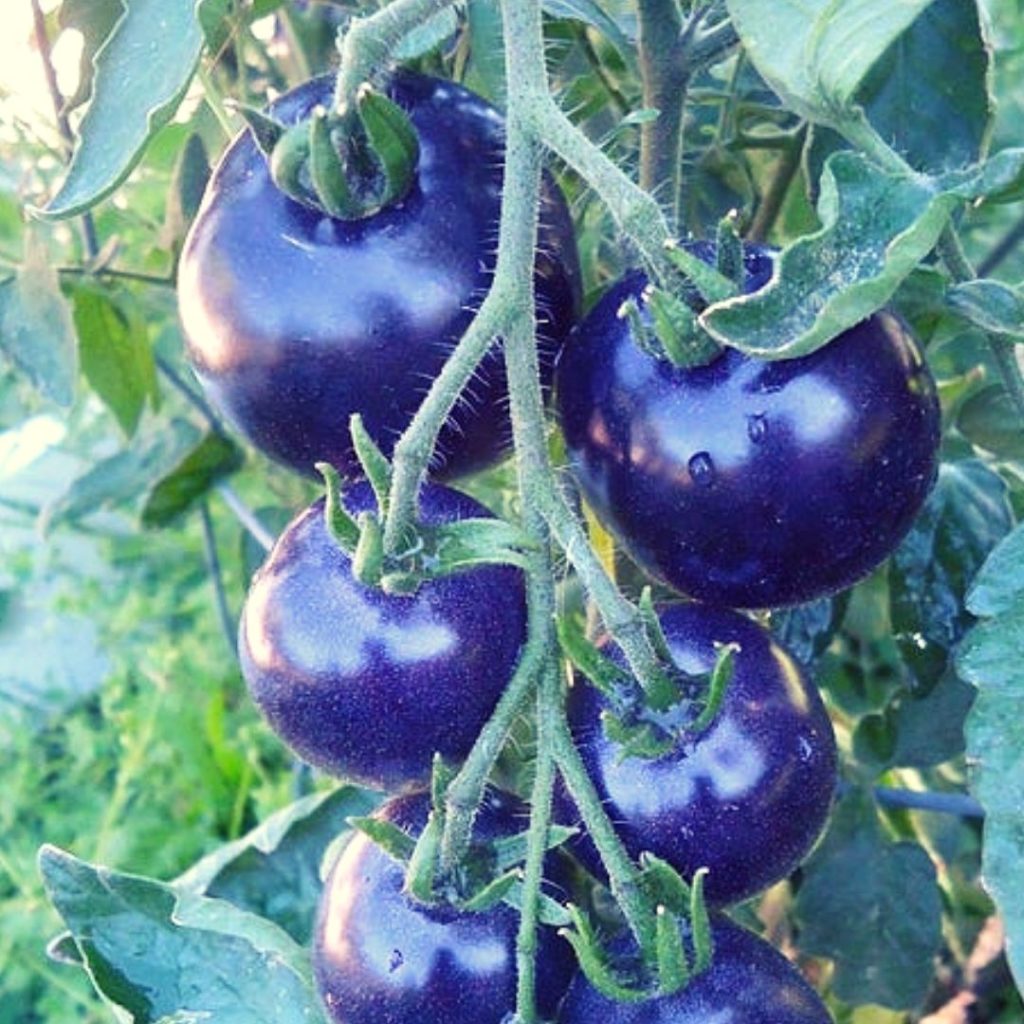
Blue tomatoes, also known as purple or indigo rose tomatoes, are grown to be high in anthocyanins.
The high level of anthocyanins (a powerful antioxidant) in blue tomatoes is found in their skin, and gives them their blue color.
Blue tomatoes taste great, just like regular red tomatoes with a sweet, tangy flavor.
6. Damson Plums
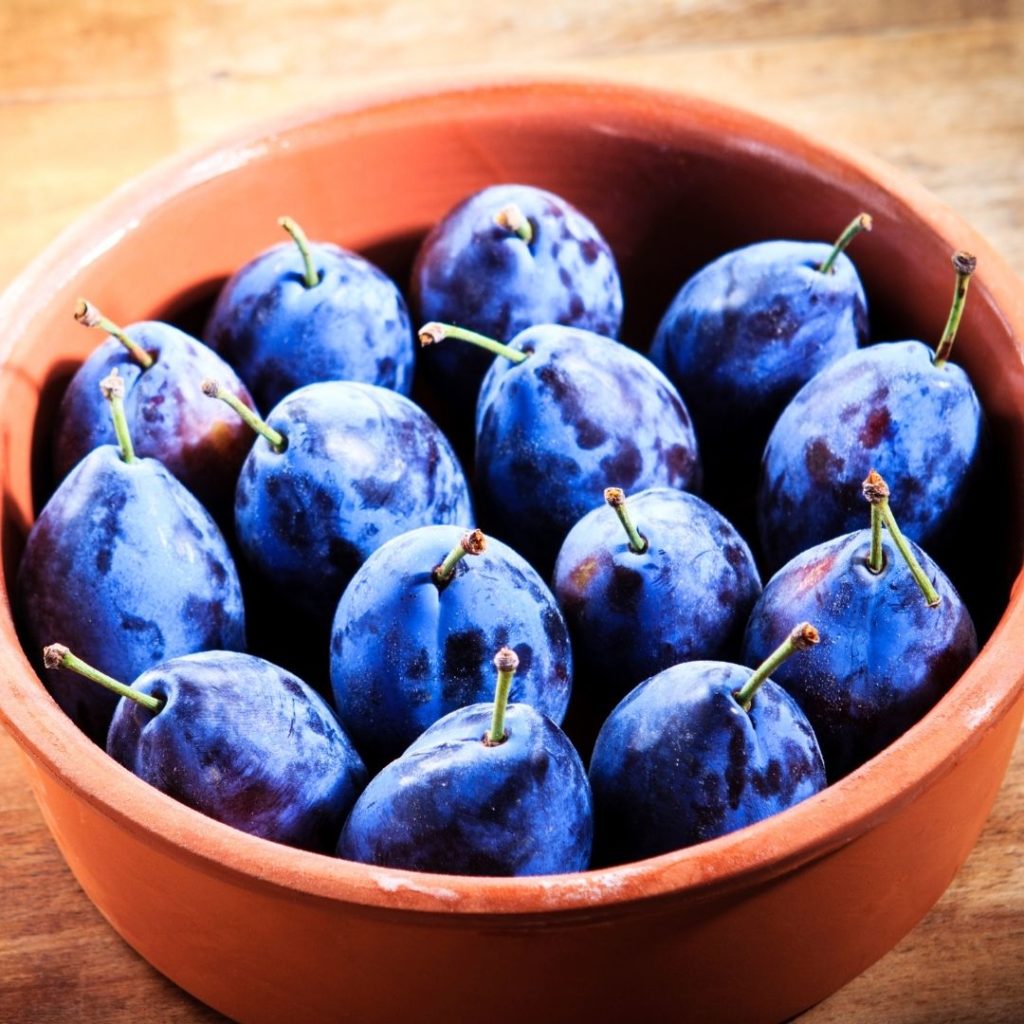
Damsons are blue plums that are often processed into jams and jellies. They can also be dried to make prunes.
These small plums are dark bluish purple to black, and have firm green or golden yellow flesh.
They’re high in vitamin C and contain sorbitol which helps regulate your digestion. Damson plums offer many other health benefits including lowered cholesterol, protection against heart disease, and increased energy.
7. Concord Grapes

Concord grapes are an aromatic, healthy, purple-blue fruit that can be eaten fresh or used to make wine, juices, and jams.
Concord grapes are high in flavonoids like resveratrol. Resveratrol is also known to relax arterial walls in order to increase blood circulation and lower blood pressure.
8. Blue Sausage Fruit
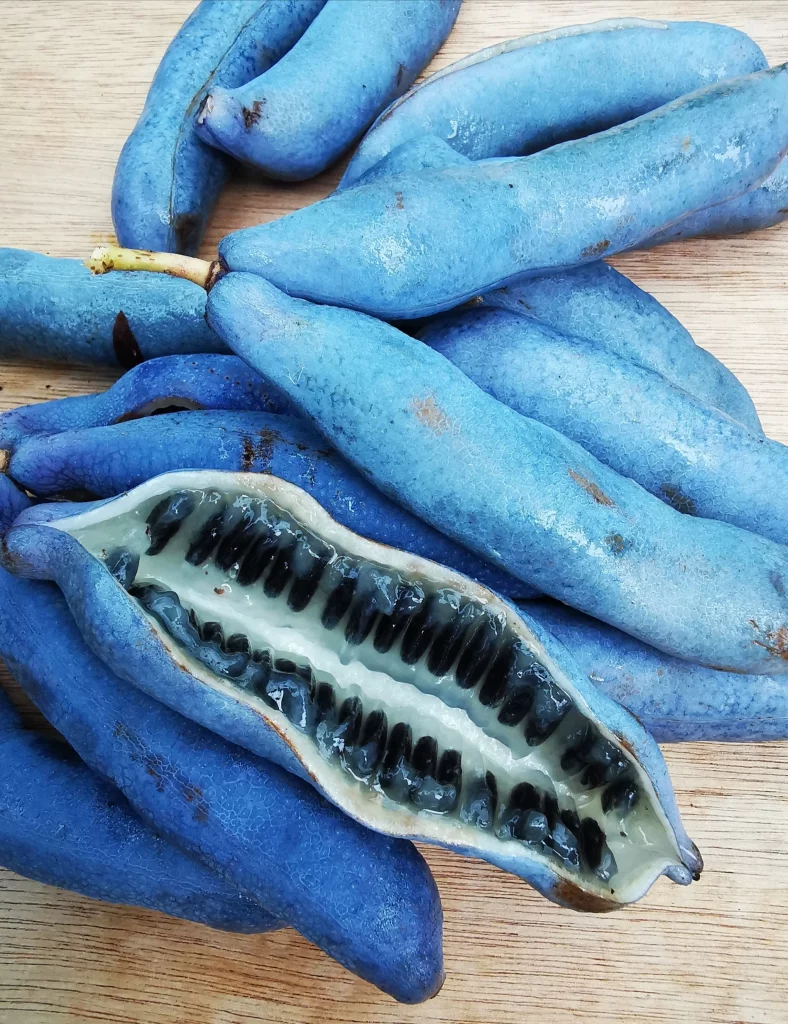
The blue peel of this fruit is not edible. The translucent pulp has a sweet and subtle taste.
To eat the blue sausage fruit, split down the middle, lengthwise to expose the pulp. The seeds should be discarded.
Sausage fruits are known to possess anti-microbial properties. They can also be a good source of essential fatty acids and phosphorus.
9. Blue Pearmain Apple
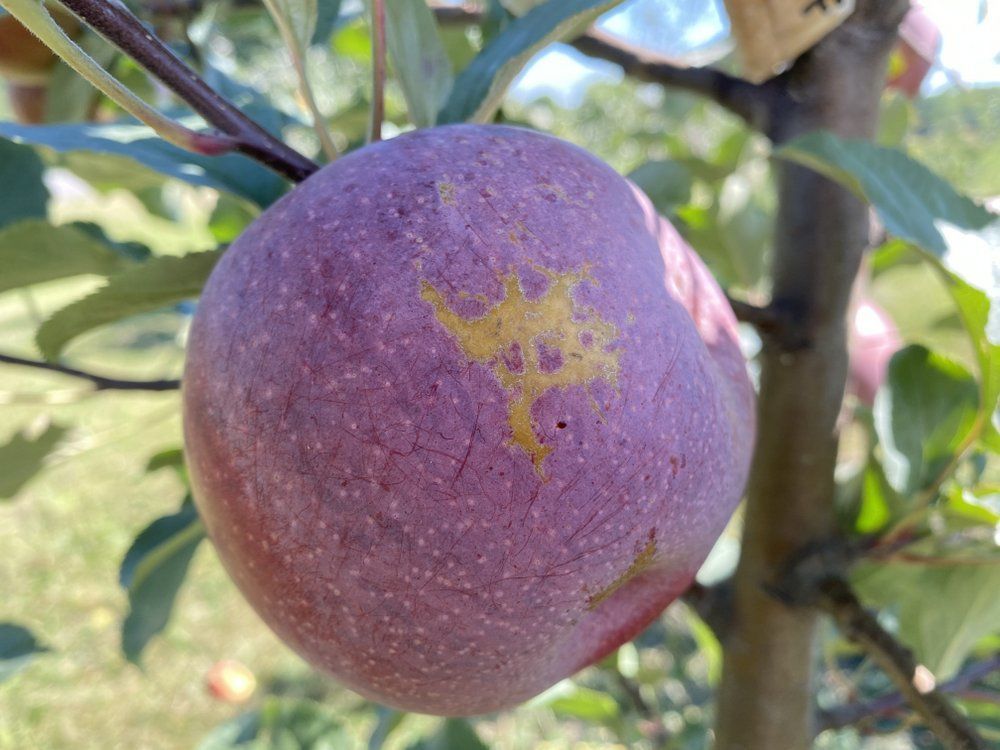
The Blue Pearmain is an American heirloom apple with a unique bluish bloom over a dark purplish skin.
Like many apple varieties, the taste is sweet and mildly acidic. Blue Pearmain apples have a mildly sweet flavor with vanilla, melon, pear, and caramel nuances; with a tart aftertaste.
Blue pearmain apple contains immune boosting vitamin C. They’re also rich in fiber and antioxidants. It begins to ripen in October in upstate New York.
10. Jenipapo
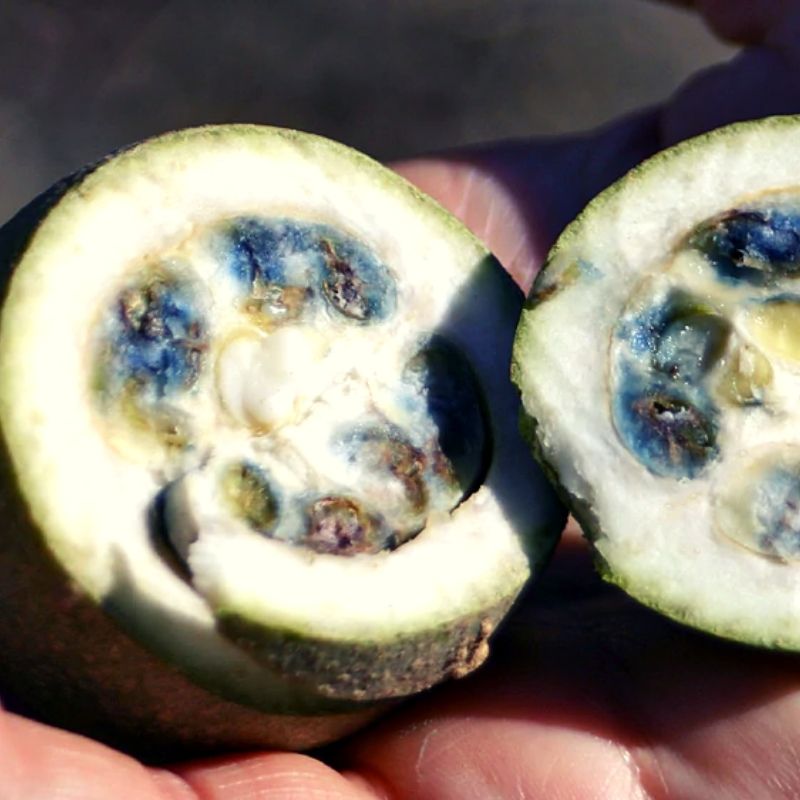
Jenipapo can grow up to the size and shape of a kiwi. Brazilians use Jenipapo as a blue food coloring, and also to make syrups, compotes, and liquors.
Jenipapo can contain high amounts of Genipin when it’s not ripe. Genipin produces an edible blue color.
This fruit contains calcium, iron, B1, B2, B5 and vitamin C.
11. Honeyberry
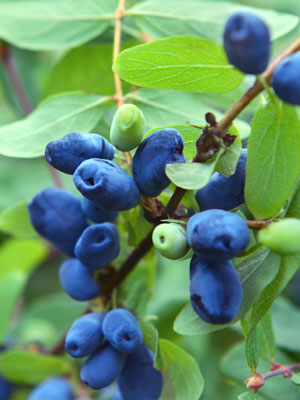
With a flavor is similar to a slightly under ripe blueberry, the honeyberry can be eaten fresh or made into jams or fruit wine.
High levels of antioxidants in honeyberries will boost your immune system. The highest concentration of anthocyanins was found in honeyberries when compared to other common berries such blueberries, mulberries, or blackberries. These berries offer more than antioxidants. They’re also a great source of fiber, vitamin C and other valuable nutrients.
12. Texas Blue Giant Fig
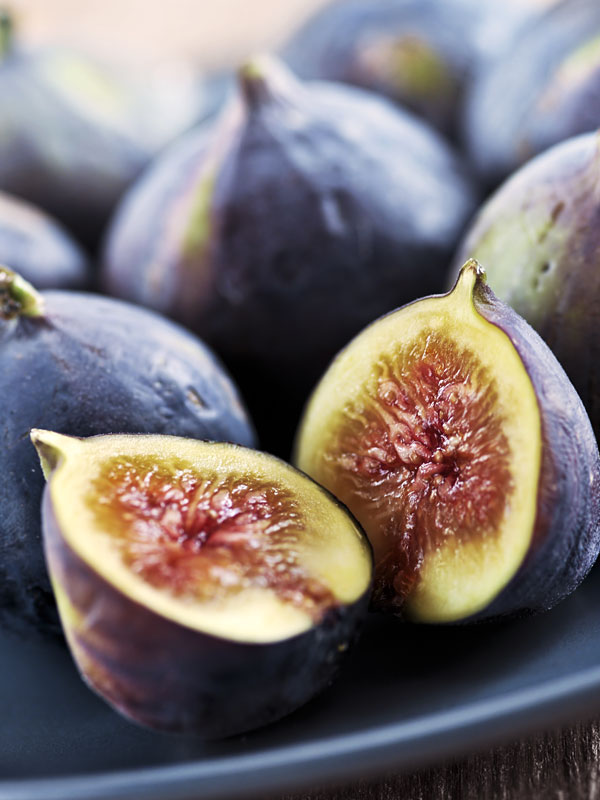
Freshly picked, sun-ripened Texas blue giant figs produce large fruits with beautiful blue-purple skin and a delicious amber flesh. The mild-flavored fruits can be very sweet if left to ripen on the trees.
Figs have the a high mineral and fiber content. They contain vitamin A, vitamin C, calcium, magnesium, iron, and potassium. And are an excellent anti-inflammatory food that aids in digestion, promotes healthy skin, and balances glucose levels. However, figs contain oxalates, which restrict absorption of calcium.
13. Laurestine
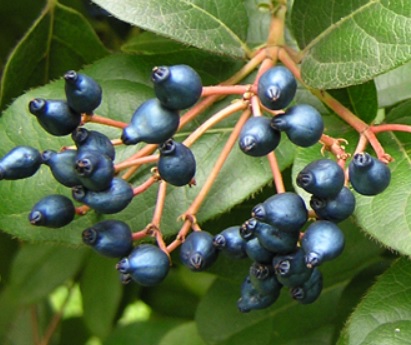
Laurestine (Viburnum Tinus) is a small fruit with a stunning, metallic blue color. Some people describe their taste as similar to raisins. Others find them very bland and unpleasant.
Birds are attracted to the shiny, blue color of this small fruit. But people aren’t big fans of the large pit that leaves very little edible pulp.
However, it can be used as a purgative against constipation. Recent research has shown that the tincture can be used as a treatment for depression in herbal medicine.
14. Filius Blue Pepper
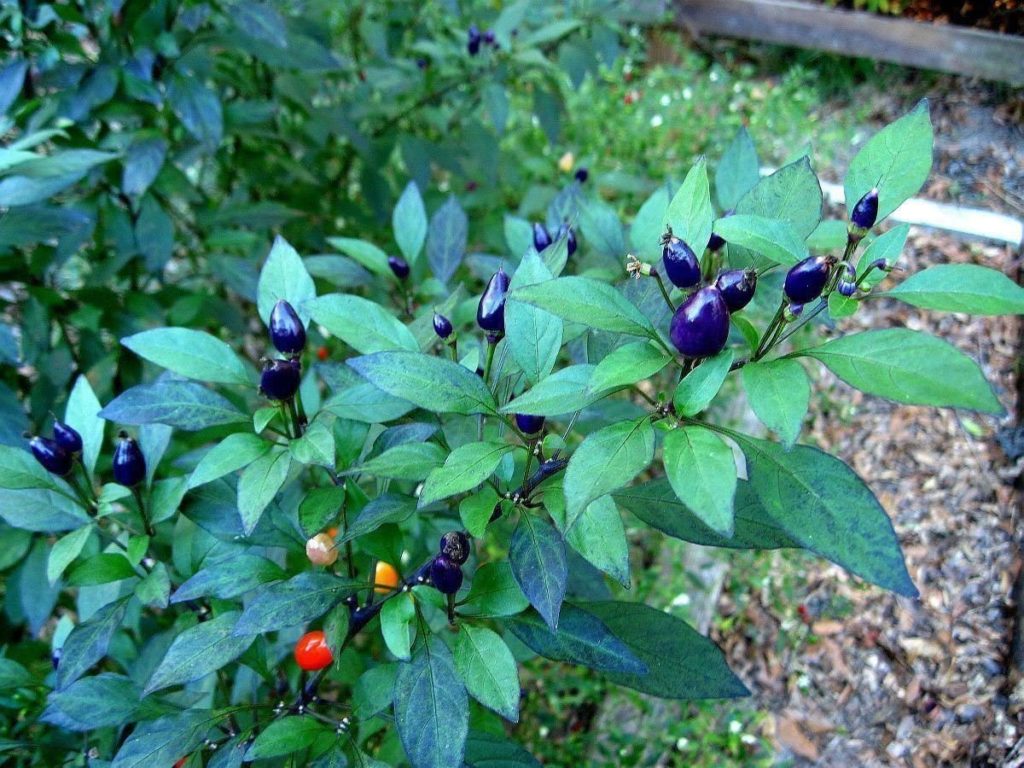
Every kind of pepper, from the bell pepper to the jalapeño, fits the bill as a fruit and not a vegetable. The Filius Blue pepper is a deep blue/purple chili pepper.
The Filius pepper will decrease in heat as the peppers ripen to red. Make sure you harvest the pepper when they are still blue-purple.
Filius blue chilis are very flavorful with a hint of heat and sweetness. They can reach 40,000 to 50,000 Scoville heat units (SHU).
15. Blue Olives
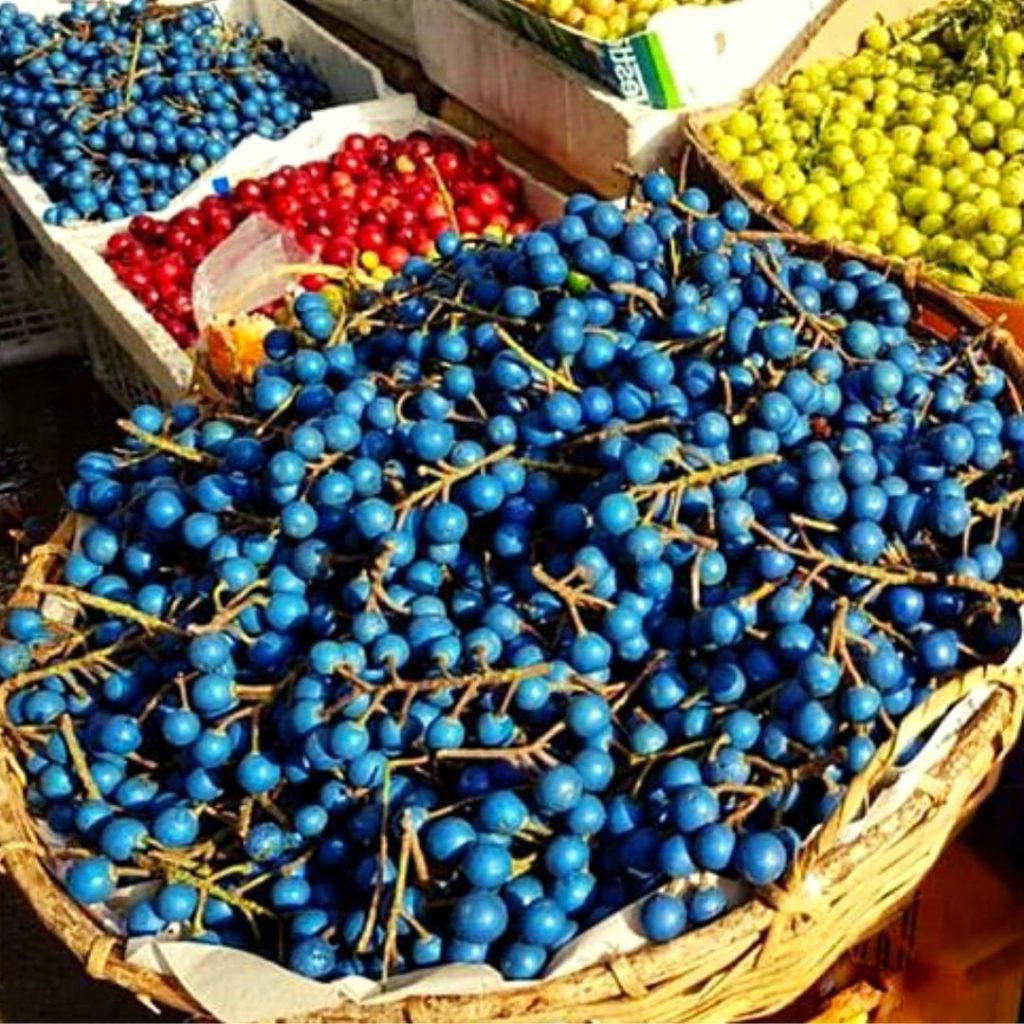
Blue olives are indigenous to Sri Lanka. They have a bright blue edible skin, and are green on the inside with an avocado-like texture. The olives are slightly sour when it is ripe.
This blue olive is used in Sri Lankan cuisine to create both sweet and savory dishes. Due to their high nutritional content, this fruit has been used in Sri Lanka medicinally.
16. Blue Jarrahdale Pumpkin
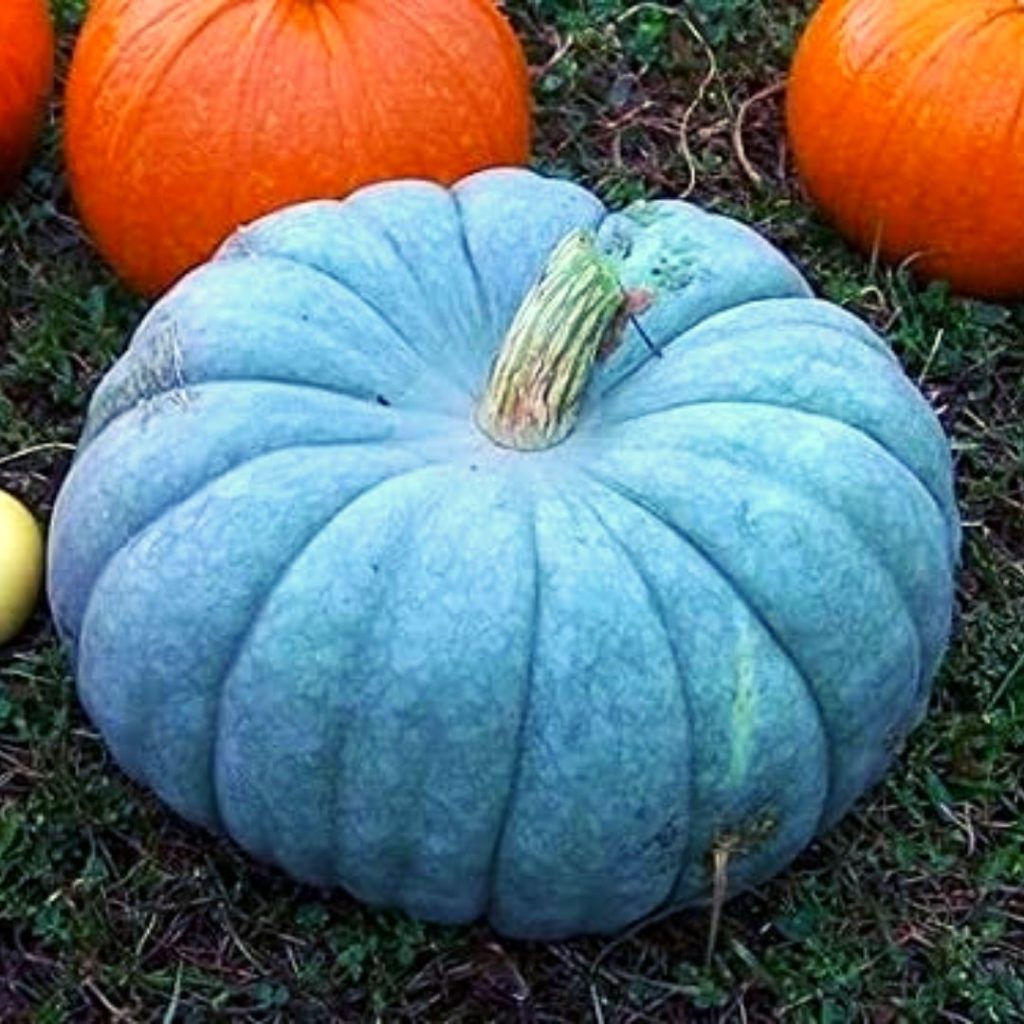
The Blue Jarrahdale Pumpkin is an exotic and rate blue‐skinned pumpkin has a beautiful salmon‐orange interior. This medium to large pumpkin has a slightly flattened shape.
The flesh quality is firm and has an excellent flavor.
Jarrahdale Pumpkins are super nutritious and rich in vitamin A and iron.
17. Nonna Agness Blue Beans
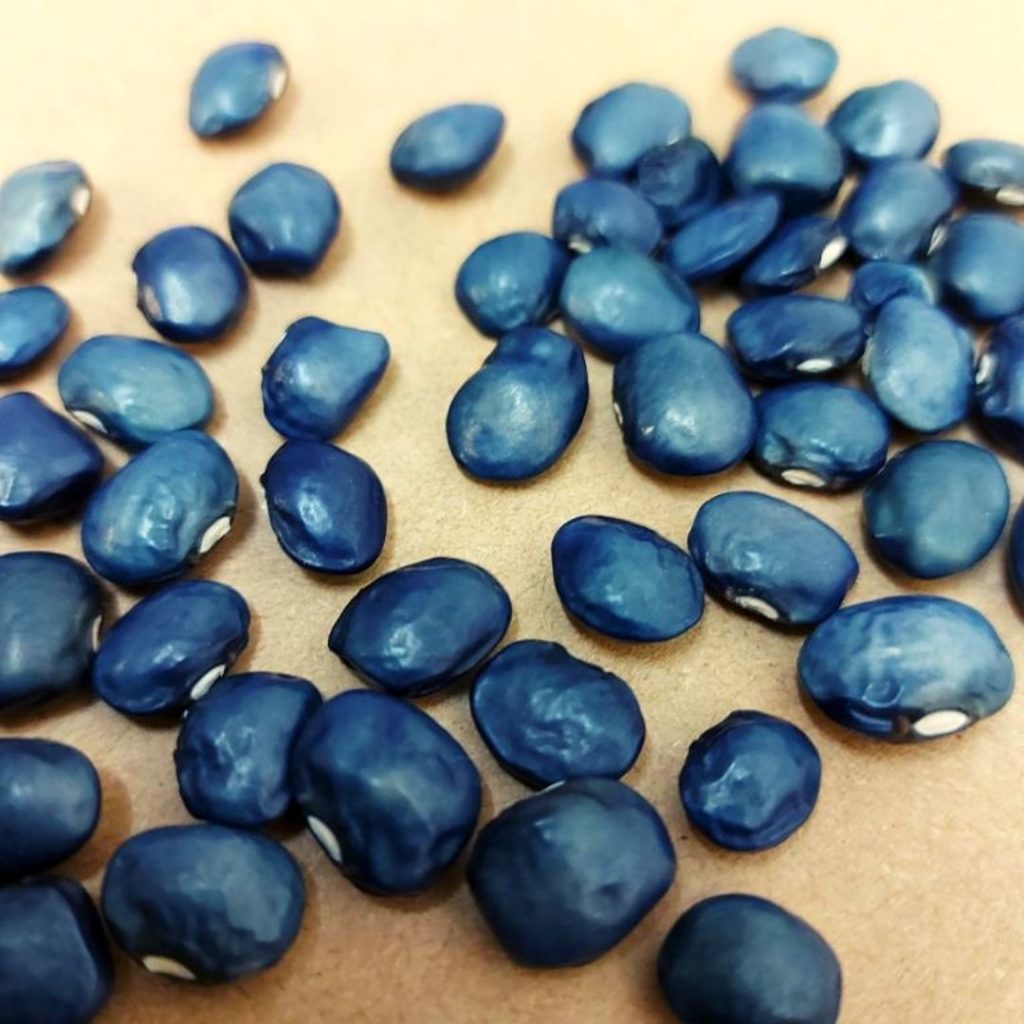
Just like peas, beans are a member of the legume family — they’re seeds that come in pods, and that makes them fruit. Nonna Agnes beans are a very rare Italian blue bean.
The blue pigment in is sensitive to heat. It degrades to a steel gray color when ripened in hot temperatures. Those ripened in cooler temperatures have a stunning sapphire color.
While they’re best as dry beans, you can shell them or use them as snap beans when young. These beautiful blue beans are also easy to grow and extremely prolific.
18. Utrecht Blue Wheat
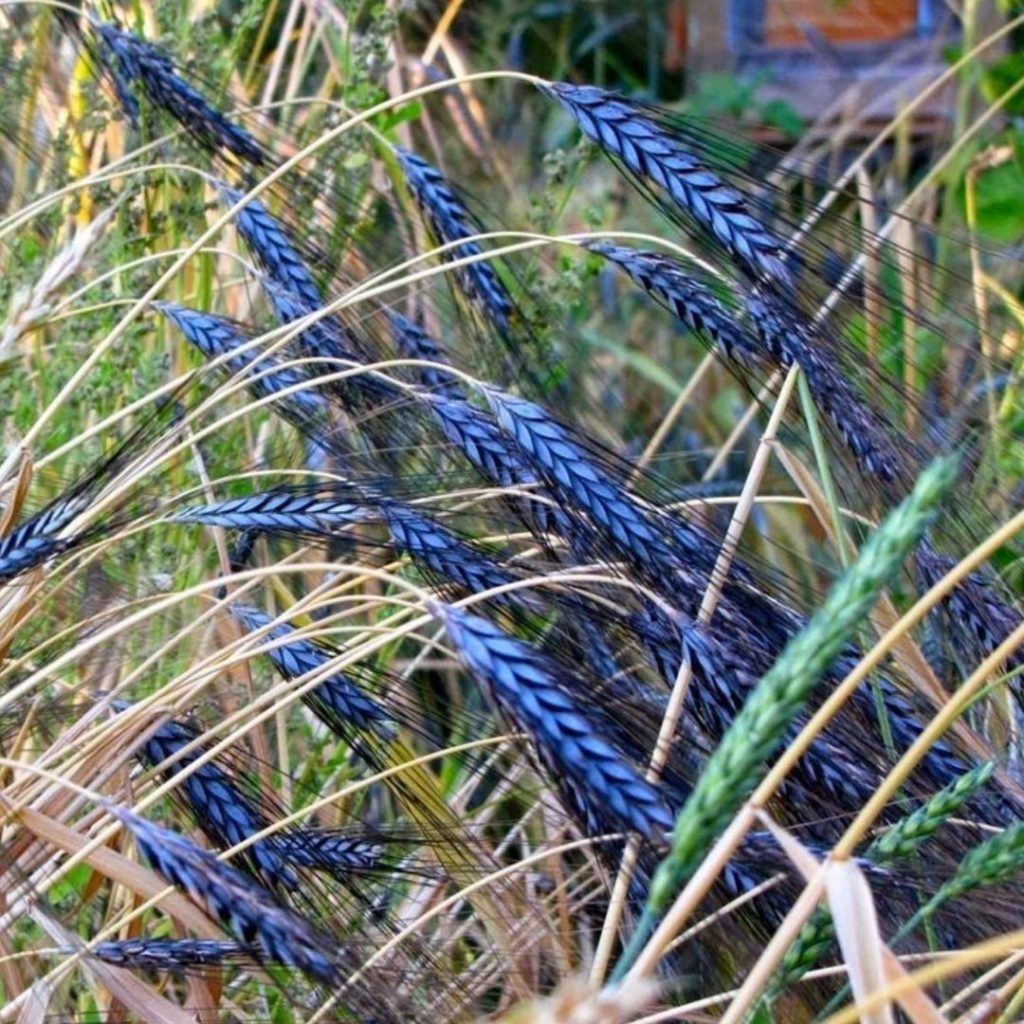
Wheat, and other grains, are technically a type of fruit. Utrecht blue wheat is a Dutch heirloom grown in the area of Utrecht, Netherlands. It has a stunning blue color and long black awns (bristles).
This wheat is edible. However it is very difficult to thresh, so it it typically be grown for craft or ornamental use.
19. Blue Agave
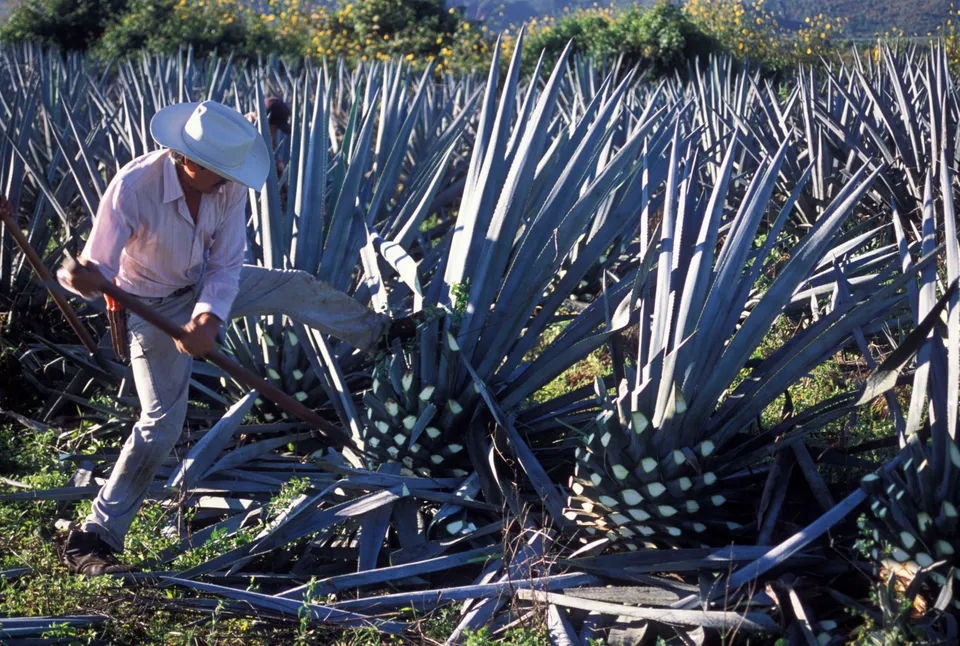
The piña (pineapple) is the part of the blue agave fruit that is used to make tequila. Blue agave plants mature into large succulents that have spiky fleshy leaves. The flowers are edible and many people toss them in salads. The leaves are rich in agave sap, and the stalk can be roasted before they flower.
Blue agave has a low glycemic index. It also contains vitamin B6. Use blue agave as a sweetener instead of sugar or honey for hot drinks, baking, and any other cooking.
Dark agave nectar can be used straight from the bottle to drizzle on French toast or pancakes.
20. Blue Corn

Blue corn is a staple of Mexican and American Southwest cuisine and is a totally natural blue food.
Blue corn kernels are deep blue in color and turn pale blue-grey if ground into masa harina or cornmeal.
This corn variety is more digestible than its yellow counterpart because it contains less indigestible starch.
It’s also used to make blue tortillas and corn chips. And as a bonus, it has 20 percent more protein than white corn and a lower glycemic index! Blue corn anthocyanins contain antioxidants with anti-inflammatory properties.
21. Sloe

Sloes are small, wild berries that grow in England. They are about the size of blueberries.
Typically they aren’t eaten fresh due their their unpleasant, astringent flavor.
Sloes are often used to make gin (an alcoholic liquor) in England and America.
Related: 37 Fruits That Start With S

